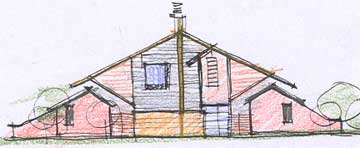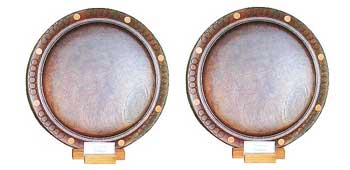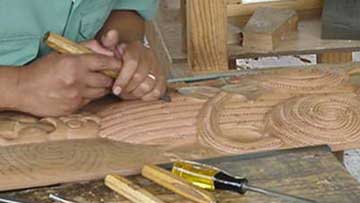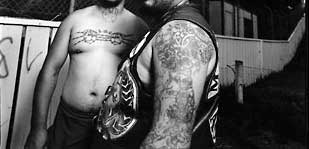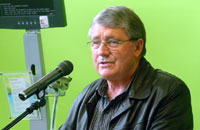I left you at the end of my last blog with my being all excited and promising to lighten up. I had the vision then of being able to focus on the positive, the things that lift up, augment and brighten our lives rather than on the sad and sometimes scary features of the ‘P’-using world.
Expectations and outcomes don’t necessarily coincide and rather than triggering off a flurry of positive initiatives in the aftermath of the Joe Walsh – Sinners Tour we actually ran headlong into some pretty aggressive resistance – a back lash.
You can only jump a chasm in one leap and for me at least, for a week or two, it seemed like we were in mid-flight and might have over-reached.
The difficulty with complex issues is that they don’t necessarily break down in to easy ‘bites’ for the media.
No matter how carefully the mokai whanau ora story might be presented, and regardless of the struggle to avoid hype and to keep things in perspective (for instance booze is still way ahead in absolute terms as regards ‘causing harm’ as compared to ‘P’) the newspaper or TV will invariably describe the effort as an ‘anti -P campaign’, and many users interpret that as an ‘anti-me campaign’. Our desired positioning is ‘I’m on your side’.
| Sharing the kai, | |
| Sharing the pain, | |
| Sharing the drug perhaps, | |
| Sharing the paranoia | |
| Even if I am surrounded | |
| James K Baxter: Ballad of the | |
| Junkies and the Fuzz |
In terms of our Antipodean Community Resilience Model we were aiming our effort towards the embrace/persuade action quadrant, yet, perhaps, our target community was experiencing our effort in the attack/dissuade quadrant. There, mid-flight across the chasm, the thought occurred that the current mokai whanau ora action mix is too oriented to awareness-raising and not oriented enough to creating tangible, visible, advantageous outcomes.
| It will take more than talk | |
| To make this a country | |
| Where the men who are slaves | |
| Work for things other than money | |
| James K Baxter: Ballad of the | |
| Third Boobhead |
And that thought intimated the need for a tactical adjustment, the application of more effort towards solutions, getting on with the job. And with this conclusion to mind a certain sense of peace settled, and a charge of energy was fired, not of the sprint form but that of a long-legged and sustainable stride, the stayer’s pace.
If self-doubt had caused a wobble in flight, then the decision to go harder seemed to provide the necessary boost to recover the optimal arc needed to compete the cross-chasm leap. Jeez, I can go on ….even when I’m trying not to…..
Anyway, I thought this blog should feature some of the actual projects we have underway, the real stuff, the action that will produce real, measurable results and tangible outcomes and so here we go…
Housing, the quality of our living situation, is a powerful determinant of the level of good health that we will enjoy. There are the physical characteristics of a good home – good design, good insulation and so forth, and the human and interpersonal aspects – loving relationships, absence of domestic violence, and a sense of community.
One of the mokai whanau ora issues that we consistently face is that some people will be able to counter and overcome their addictions, or face other life challenging issues without being institutionalized, if they have access to a safe and supported living environment. On your own these challenges may be too tough, and, in an unfriendly and unforgiving society the sense of loneliness overwhelming.
| All the calamities have not | |
| Flattened the lonely wish to be loved | |
| That drew the faggots and the torches of the hunters | |
| In another city. But here the air is calm. | |
| James K Baxter: Poem for Alison |
To meet this need our notion was to design a supported housing community – a place that might have a ‘P-free whare’ status – or indeed whatever further ‘free’ status the inhabitants decide to make the community.
The idea has been converted to design by Hawke’s Bay architect of note, Paris Magdalinos. Partner groups have bought into the project. What has developed is a joint venture project between the Waiohiki Charitable Trust, Ngati Hinewera, a cluster of whanau Maori at Waiohiki in Hawke’s Bay, and Housing New Zealand Corporation. (HNZC are actively seeking partnerships to increase the pool of social housing).
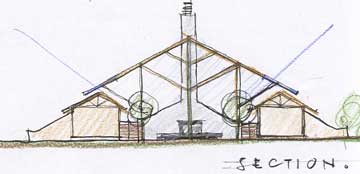
Paris has proposed that seven apartments be positioned around a Hawke’s Bay lifestyle ‘indoor outdoor’ common courtyard dining room. This, supported by an associated communal kitchen, serves as the fulcrum for the collective pro-social activities of the inhabitants.
The whare will be located on Ngati Hinewera land at Waiohiki. This land includes extensive gardens and orchards capable of providing fresh produce for the various whanau living in the complex. Fruit, and other produce supply, is abundant so there are ample opportunities for bottling and preserve making, utilizing the communal kitchen and fostering a sense of industriousness and productivity.
The design of the complex enables people to eat together and to mix in recreational activities when they want, or to pull away to their own private facilities when they need the space.
The overall facility would be run by a management committee comprised of members of Ngati Hinewera and members of the Waiohiki Community Trust.
The idea is that Waiohiki Community Trust will own and manage the building, leasing the land from Ngati Hinewera for the duration of the mortgage (say 25 years).
It is intended that at this point Ngati Hinewera will take ownership of the facility. We propose to undertake a comprehensive feasibility study of the project in the New Year to make sure the fiscals add up and that it is sustainable. Already though we’ve had intimations of support from a number of quarters – for instance Bruce Trethewey of Trethewey Granite and Marble has indicated that he’ll contribute some stonework to the project.
If you’d like to support or get involved in this particular initiative please contact me at oreilly@inhb.co.nz
A big part of the supported community housing project is the idea that we’ll develop and provide a very active daily schedule made up of ‘pro social’ activities that meet the needs and develop the capacity of the member whanau.
The notion of pro-social activities is based partly on that old adage that the devil makes work for idle hands and at certain points in their lives the mischief-making-potential of some of my whanau and brothers in arms is great indeed.
When the general rate of unemployment is around the 3% mark but Maori unemployment remains at around 9% it’s necessary to probe at a more complex level than simply focusing on the placement needs of the labour market and supplying a matching service.
Baxter’s “work for things other than money” springs to mind when it comes to mobilising the the mokai whanau ora community into work or enterprise. There seem to be a number of subtle drivers at play including:
- A profound desire to work together for collective outcomes
- The need to be part of a group rather than to be an individual employee
- The desire to work at one’s own business or on one’s own land
- The desire to work at a creative level or at things that give emotional satisfaction.
We’ll come back to issues associated with work and enterprise shortly. In the meantime, let’s focus on the creative aspects and potential of a wide range of positive activity amongst which must be the opportunity to grow food for the soul; the chance to express oneself by way of symbol and representation in defiance of what might seem to be an all powerful and often oppressive system.
| Conversing with the impenitent thief | |
| The one unique left-handed saint | |
| Who knows why we must write and paint | |
| James K Baxter: Letter to Sam Hunt |
And that brings me to the establishment of the Waiohiki Creative Arts Village, another community based joint venture, still organizationally based on the Waiohiki Community Trust but this time involving the Hawke’s Bay Woodturners Guild, The Taradale Pottery Club, a collective of young artists called Artists Anonymous, Hugh Tareha – carver, and John Gisborne – potter.
This pool of artists and artisans provides the platform for a wide range of positive activity. The plan is to develop the former dairy factory at Waiohiki so as to provide up to ten workshops and a display gallery and to convert two houses into accommodation for visiting artists.
Our first international artists-in-residence (an English couple, Mr. and Mrs Herbert no less, both painters) are currently occupying one house and on their departure early next year we’ll undertake extensive improvements on this dwelling converting it into two virtual apartments.
Over the past year or so the old dairy factory building has also been extensively renovated and brought up to standard. Architect Graham Weaver has drawn up a development plan for the site and this has been approved by the Hastings District Council.
In former years the site of this project was called ‘Pa Whakairo’ the carved pa, and it was surrounded by huge palisades and carved poupou. To celebrate the mix of cultures and art media currently present in the creative arts village the community of artists have created five new poupou. We recently unveiled them and they stand bright and tall at the entrance to the village.
By the way if you want contemporary or traditional carved poupou these can be created to order. Contact me on oreilly@inhb.co.nz
And the story of the poupou at Waiohiki brings me to the unveiling, in deepest Wadestown, Wellington, of a poupou dedicated to the memory of the late Elespie Prior, art patron, philanthropist, woman of grace and of mana.
Elespie has been described as being the last matriarch of the great, wealthy and early pioneering families, descended as she was from Bendix Hallenstein and Willi Fels. The pou was carved by Te Rangatira Jack Tuhi, a man incarcerated in our high security prisons for some 22 years and, at the end of his sentence, helped, by Elespie and Ian Prior, to re-enter the world of light and to create rather than destroy.
| And what is said or done can hardly darken | |
| The tribe’s love more than a leaf that floats on a great river | |
| James K Baxter: Poem for Alison |
So there we were, on a recent Saturday, the rich and famous gathered alongside a group of Black Power in one of Wellington’s most affluent suburbs, all paying respect to someone they loved, blessing a Maori poupou dedicated to a Pakeha woman, with speeches being given in Maori, in Tokealuan, and in English, with songs, with music, with haka, and as a final relish, with tui singing in the trees; ah, man, this is Aotearoa…
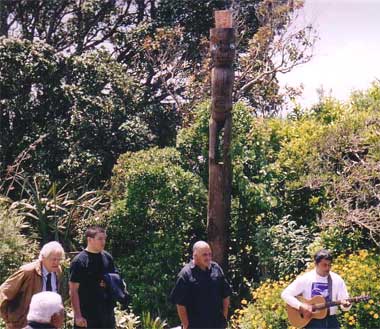
From left to right: Henry Tuia, representing the Tokelauan community, Ian Prior, Ian’s grandson Anju Ejima, Denis O’Reilly, Brannigan Kaa.
A mate rang me early in the morning recently. He was in Melbourne and was listening to a BBC interview with two gang leaders, one Mobster and one Black Power, recorded recently in my back yard.
My mate said that the interview was fantastic and that the guys spoke in a way and of matters that he had never expected. They talked of family, of being Maori, and of turning their backs on old habits such as using ‘P’.
The Mob leader was Claude Kahika, captain of Hastings, the founding chapter of the Mongrel Mob. Claude’s views have been picked up by crime reporter Dominic Andrae as part of a Masters thesis and are reported by Lee Umbers in a series currently running in the Sunday News.
The story on December 5th was titled “Face of the Gangs in 2004” and the headline read “P is outlawed, Patch crime stopped, No to gang rape, Talks with rivals”. Despite its tabloid context its worth a read.
In the same vein I was invited to speak at a meeting convened amongst the NZ wide leadership of the Notorious chapter of the Mongrel Mob. I suppose it’s a testimony to the discontinuity created by methamphetamine that despite my Black Power affiliation I was even invited to be there, let alone to speak.
Despite the alleged (and probably partially with substance) history of the chapter, in the early days of P here in New Zealand, many of the leaders present at the Putarauru hui were absolutely and determinedly opposed to P.
These guys had come together in Putaruru to discuss with government agencies and with politicians how they might actively and positively engage with society especially in the context of their families. I heard a familiar, and I believe authentic, story from these Mongrel Mob leaders.
| And the rainbow of aroha shine on each one’s face | |
| Because love is in the look, stronger than lush, and truth is in the | |
| mouth, better than kai | |
| James K Baxter: Ballad of the Junkies and the Fuzz |
Essentially, people have grown up. They don’t want their young to take the same pathway as they had themselves.
And, perhaps in an essential shift of perception as compared to earlier years, they agree that initiatives need to be based on whanau rather than on gang organizations.
Just like for politicians there’s no votes in being seen to be ‘soft on drugs’ there’s no votes in being seen to be ‘soft on crime’.
‘Gang members’, as we know them, have become the personified ‘devils’ of crime. Despite the likely reality that the real ‘gang bosses’ are more likely to present as hard-to-distinguish-from-the-crowd professionals, we seem to have settled on the brown underclass as the source of the criminal population.
| For the fate of a boobhead is | |
| That me do him bind | |
| And plant him in the digger | |
| Till he goes out of his mind | |
| And if you want to know more about it | |
| Go and ask my friends | |
| At the Duke or the George or the Bistro | |
| For the story never ends | |
| And the rich men pay the fuzz | |
| And the fuzz arrest the poor | |
| And it’s nothing new I’m saying to you | |
| It’s all been said before | |
| James K Baxter: Oh Early In The Morning |
In the main, political discussion is focused on how to hit harder with an increasingly bigger hammer.
Despite the apparent lack of potential for political capital it was inspiring to see a senior cabinet member, Jim Anderton, and a Party (co)leader, Tariana Turia, being prepared to take the time to speak to the group who had gathered.
I never had the chance to listen to Tariana’s korero, but I did listen to Jim Anderton’s korero to the group and this was frank and focused.
Frank to the extent that Jim reminded his audience that it was a current reality that people generally would be suspicious and distrustful of them, and, regardless of whether this was fair or deserved or not, that they should take this position as the existing viewpoint and get on with showing that they can contribute socially and economically.
Jim seemed to be happy to support the development of family (whanau ora) but not of gang. And he was focused in that.
Having set the reality perimeters, he set to work, establishing the fact that there was a skilled labour shortage, that there was potential demand for any New Zealander who wanted to work, identifying opportunities, and then delegating the two bureaucrats he had alongside to follow up on various ideas and possibilities. Now that’s leadership.
| And the tribe need a father who is afraid only | |
| Of ceasing to love them well | |
| James K Baxter: Autumn Testament (20) |
Of course to the suspicious mind any business that has a ‘gang member’ element is – ‘wink wink’ – bound to be involved with drugs and money laundering and so forth.
This refusal to assume the best or even to give a fair go sometimes creates a self fulfilling prophecy inasmuch that criminal offending presents as the only success route that seems to be available.
| E taku ariki, how long how long | |
| Till your moon lights the heart of a maori zion | |
| And a thousand men move out of the bin and the clink, | |
| Working and eating together, sharing whatever they have, | |
| And you are born again in a broken whare | |
| And your mother wears on her head the taniko band? | |
| James K Baxter: Zion |
My sense is that whilst we’ve effectively industrialized the police and prisons this hasn’t been accompanied by the necessary systems alignment to deliver on the organizational promise – stronger safer communities and reduced re-offending.
Neither policeman nor prison officer is currently incentivised by there being less crime or lower re-offending.
In fact, like the military industrial complex, from a systems perspective, what Angela Davis calls the ‘correctional industrial complex’ needs to crank up the threat, and crank up the throughput, in order to grow.
A moral panic has been created in a situation where the actual scope of the problem is uncertain.
The intention to introduce property seizure laws aimed at taking ill-gotten gains off gang bosses is a result and an example in point.
Reversing the burden of proof even at the civil level – ‘assuming the worst’ – promises a loss of mana for everyone, including New Zealanders who are well beyond the influence of or involvement with any gang.
Moreover the threshold of interest set at’$30,000′ means a virtual bottom trawl. The assumption of innocence – ‘assume the best’ – provides one of the pillars to our whole legal system. We tinker with these fundamental beliefs at our peril.
On this debate we seem to have become locked into a highly politicised group-think, where the only point of difference between the major parties is the relative degree of punishment to be dished out, or lowering the level of tolerance to be shown before we lock you up.
Like the situation with superannuation we need to deal with the complexities of crime and criminal offending in a multi-partisan or non-partisan way.
| To love in safety | |
| Is not love; the chains of love are what | |
| We make ourselves | |
| James K Baxter: To Understand What Is |
To that end my proposition to the Mongrel Mob meeting of leaders was that in March of 2005 they put forward 15 leaders to participate alongside 15 Black Power leaders in a three day programme to be run by John Wareham a Kiwi based in New York.
John Wareham is the founder and chairman of the Eagles Foundation of USA. He has written a great book and developed an extremely effective programme – “How to Break out of Prison” – based on the insights he gleaned working with long term prisoners at New York’s Rikers Island.
The Eagles Foundation USA’s mission is:
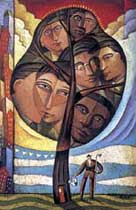 |
‘Identifying and developing an elite corps of leadership talent from among the prison population and effecting a dramatic realization of potential among all participants upon release’. |
More about this Foundation can be found on their website www.eaglesusa.org and if you are interested in learning more about or contributing to this initiative as it rolls out in Aotearoa, then please contact me directly on oreilly@inhb.co.nz
In Wellington our Mokai Whanau Ora project with Eugene Ryder is gearing up to undertake a needs analysis amongst 50 hard to reach whanau.
Professor Peter Crampton from Public Health, Wellington School of Medicine, is assisting us with the research design. A 5th year medical student, Monique McKenzie, is preparing the application to the Ethics Committee and preparing to work on the overall project.
If you want to have an input into or want to support this research project then contact me on oreilly@inhb.co.mz
I’ve been at this machine for too long. The wind that has been buffeting the Bay for these past few days has died down. Despite the past months of tumult and pace I too feel quite peaceful and content.
Tomorrow we will weed the Maori potatoes, and the garlic, one last time before harvest. We’ll clean up under the old walnut tree where the whanau will gather for Xmas, and we’ll get ready for those long languid days of summer, enjoying each others company and not doing anything in particular.
It’s been a good year. To all those who have helped across the various mokai whanau ora projects, thanks. Thanks for the emotional and human support; thanks for the practical support.
Have a great Christmas and a high traction entry into 2005. Care for yourself, care for each other, care for our land Aotearoa, and care for the world.
| The light of the new morning is bright on the grass |
| And the voices of the poor are welcoming the day |
| When the cloud of night will be lifted and pharaoh’s kingdom gone |
| Alleluia adonai |
| James K Baxter: Song to the Lord God on a Spring Morning |
Ka nui te aroha ki a koutou. Denis
Denis O’Reilly
December 2004
![]()







